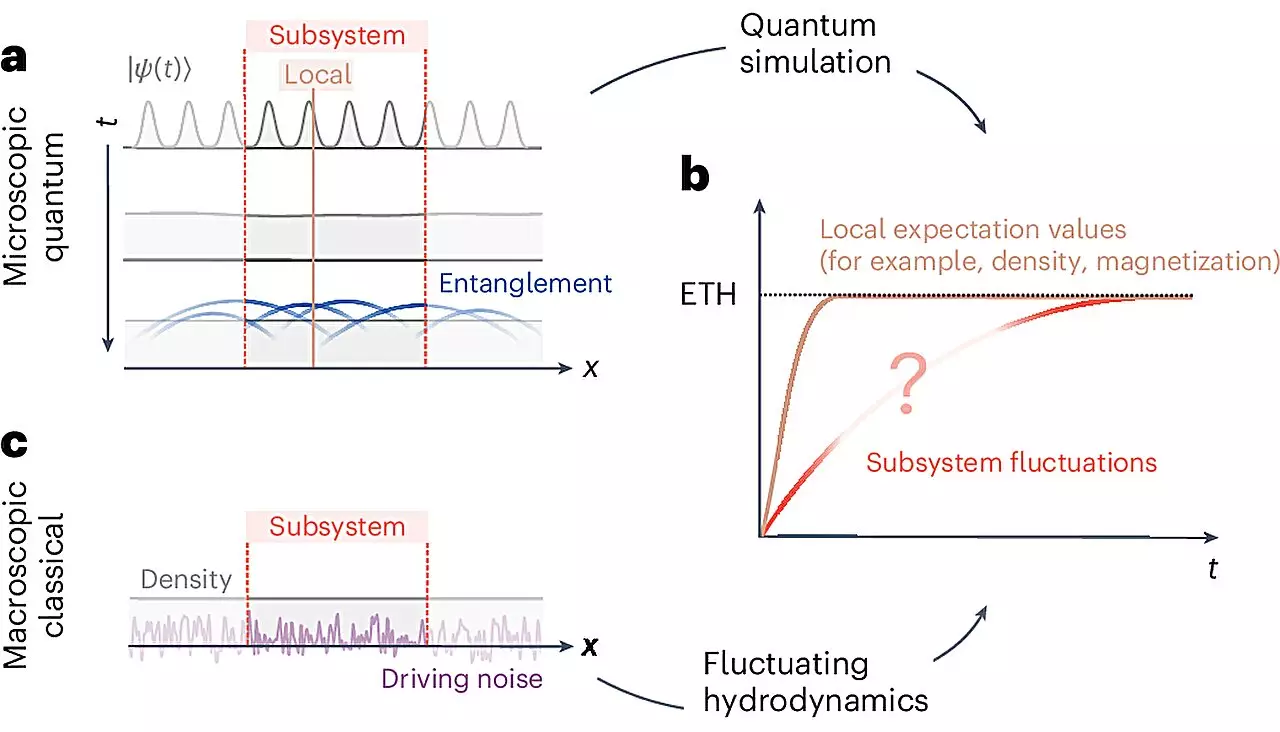The realm of quantum physics is often perceived as highly complex and chaotic, with interactions between small particles leading to intricate behaviors. However, a recent study conducted by Professor Monika Aidelsburger and Professor Immanuel Bloch, from the LMU Faculty of Physics, suggests that even quantum many-body systems can potentially be described through simple diffusion equations with random noise. This research, published in the journal Nature Physics, explores the feasibility of applying macroscopic theories to understand the dynamics of chaotic quantum systems.
In traditional hydrodynamics, the behavior of fluids like water is described on a macroscopic scale without delving into the individual interactions of water molecules. This approach simplifies the analysis by formulating flow equations that consider overall properties rather than microscopic details. Julian Wienand, a doctoral candidate in Professor Bloch’s research team, highlights the relevance of hydrodynamics in understanding system behavior. However, when examining the motion of particles within water, the presence of Brownian motion, characterized by random fluctuations, becomes apparent. These erratic movements, resulting from collisions between particles and water molecules, can be described as white noise within the framework of fluctuating hydrodynamics (FHD).
The study conducted by the research team investigates the applicability of FHD in chaotic quantum systems, which exhibit intricate behaviors influenced by phenomena such as uncertainty and entanglement. Unlike classical systems, quantum interactions are governed by distinct laws of physics that pose challenges in understanding their dynamics. The team’s experiments involved observing the behavior of ultracold cesium atoms in optical lattices, allowing for the measurement of density fluctuations and correlations over time. Remarkably, the results suggest that FHD can qualitatively and quantitatively describe the behavior of chaotic quantum systems, offering a simplified macroscopic view of their complexity.
The indication that chaotic quantum systems may be simplified through macroscopic diffusion processes, akin to Brownian motion, raises intriguing possibilities in quantum physics. By focusing on the diffusion constant as a key parameter, it becomes feasible to capture essential aspects of system behavior without delving into microscopic details. While classical chaotic systems have been speculated to adhere to FHD principles, the potential application of this framework to quantum systems opens new avenues for understanding and predicting their behavior. The research team’s findings underscore the interplay between microscopic complexity and macroscopic simplicity in describing quantum many-body systems.


Leave a Reply